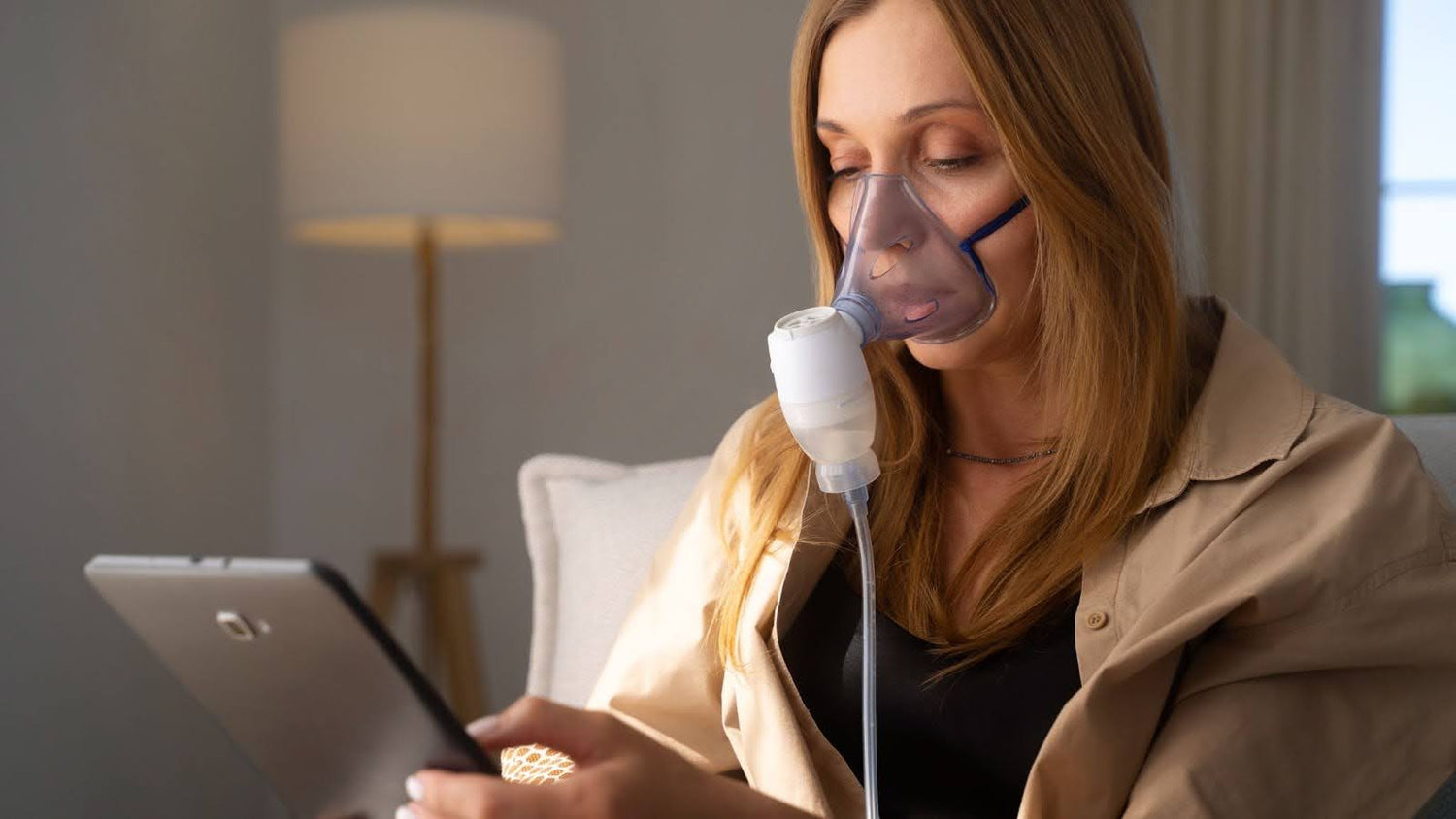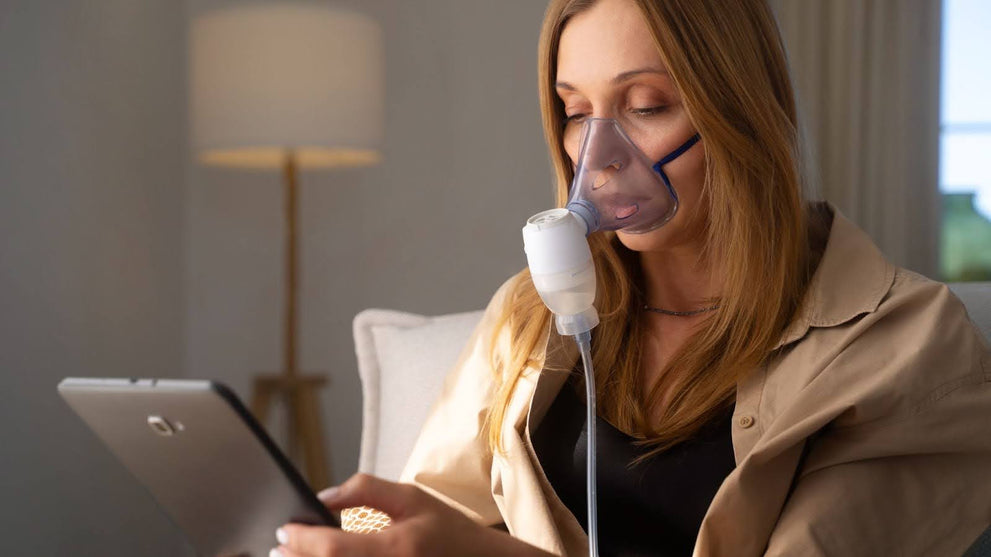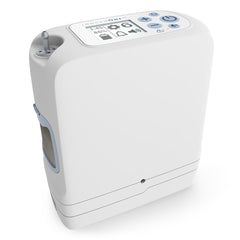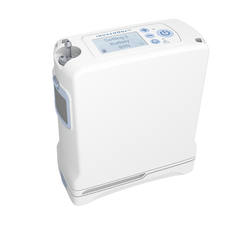Key Takeaways:
- Benefits Of Portable Oxygen Concentrators: Portable oxygen concentrators provide a lightweight, compact solution for individuals needing supplemental oxygen, improving mobility, independence, and quality of life both at home and on the go.
- Key Features To Consider When Choosing A Device: Selecting the right portable oxygen concentrator requires evaluating delivery modes, battery life, and portability to ensure the device matches your health requirements and daily lifestyle.
- Financing & Coverage Options For Accessibility: Insurance, Medicare, and flexible financing plans can make portable oxygen concentrators more affordable, helping users access essential respiratory support without financial strain.
At Help Medical Supplies, we redefine home healthcare through expertise, reliability, and compassion. Every product we provide is carefully selected for safety, comfort, and performance. Our knowledgeable team guides patients and caregivers from setup to support, ensuring confidence at every step. With trusted brands, fast delivery, and personalized service, we make quality medical care more accessible, empowering individuals to live healthier, more independent lives.
Understanding what a portable oxygen concentrator is is the first step toward easier, more flexible oxygen therapy. These compact devices provide consistent respiratory support while offering the freedom to travel, work, and stay active. With advanced technology and longer battery life, they enable users to maintain comfortable oxygen levels without being confined to a single space. Learning how they work helps patients choose the best fit for their needs and lifestyle.
In this blog, we will explore what a portable oxygen concentrator is, how it works, who benefits from it, and what factors to consider when selecting the correct device for your lifestyle.
What A Portable Oxygen Concentrator Does And How It Works
A portable oxygen concentrator offers reliable and consistent respiratory support in a lightweight, travel-friendly design. Designed for individuals managing chronic respiratory conditions, it provides dependable oxygen therapy at home or on the go. Innovative units like the Inogen G5 Portable Concentrator make breathing support more accessible, empowering users to maintain active, independent lifestyles without compromising comfort or safety.
How Portable Oxygen Concentrators Deliver Oxygen
A concentrator draws in room air and separates nitrogen from oxygen using pressure swing adsorption. The resulting air, over 90% pure oxygen, is delivered through tubing and a nasal cannula or mask. This continuous filtering process means users no longer rely on refilling heavy tanks or managing pressurized cylinders.
Core Components And Operation
Each concentrator includes a compressor, sieve beds, and electronic controls. The compressor pulls air in, the sieve beds trap nitrogen, and the control system regulates pressure and output. Once activated, the machine continuously cycles to provide a steady oxygen supply. The operation is straightforward and requires minimal setup, making it accessible to both patients and caregivers.
Power Options And Oxygen Delivery Modes
Portable oxygen concentrators are powered by AC or DC outlets and rechargeable batteries, making them suitable for use on the go or in outdoor settings. They typically feature two delivery settings: pulse dose, which provides oxygen when the user inhales, and continuous flow, which maintains steady delivery. Your prescribed setting depends on medical needs, ensuring therapy is both efficient and effective.
Portability And Safety Features
Modern concentrators are compact, quiet, and durable. Most are FAA-approved for air travel and include long-lasting batteries for extended mobility. Built-in alarms alert users to low oxygen purity, battery depletion, or flow interruption. Simple cleaning routines and regular filter checks help maintain peak performance.
Key Features To Look For When Choosing A Portable Oxygen Concentrator
Selecting the right oxygen concentrator involves understanding which features are most important for your comfort, safety, and mobility. From flow rate control to FAA approval, each detail enhances your daily experience. Advanced devices like the Inogen G4 Portable Concentrator combine portability, quiet operation, and long battery life, making them an excellent fit for users who value freedom without sacrificing reliability.
- Oxygen Output & Flow Settings: Since every user’s oxygen needs are unique, adjustable flow settings are essential. Most concentrators provide pulse dose delivery, oxygen released when you inhale, while some also offer continuous flow. Confirm your prescribed liters per minute and ensure the model allows flexible adjustments under medical supervision.
- Battery Life & Charging Options: Long battery life ensures independence and mobility throughout the day. Look for quick-swap or extended battery packs and AC/DC charging compatibility, allowing charging from outlets, vehicles, or during travel. Reliable power ensures consistent oxygen delivery, even during extended outings.
- Weight & Design: Portability depends on size and weight. Lightweight concentrators, typically weighing under five pounds, are easy to carry and often come with accessories such as shoulder straps or rolling carts. Compact models that fit under airplane seats or beside you in tight spaces make daily use more convenient.
- Noise Level & Comfort: Quiet operation is essential for rest and daily activities. Quality concentrators typically operate at or below 40 decibels, which is about the sound level of a soft conversation, allowing for peaceful use at home or while traveling.
- Ease of Use, Maintenance, & Travel Approval: Concentrators are easy to operate thanks to user-friendly controls, bright screens, and simple alarms. Maintenance should only involve cleaning filters or replacing tubing. For frequent travelers, ensure the unit is FAA-approved for in-flight use and meets your airline's requirements for medical devices.
Focusing on these features can help you choose a concentrator that supports your oxygen needs while providing comfort, confidence, and freedom wherever you go.
Pulse Dose Versus Continuous Flow Modes Explained
Your choice of oxygen devices depends on your lifestyle and medical prescription. Pulse dose systems deliver oxygen only during inhalation for efficiency, while continuous flow ensures consistent delivery for more demanding needs. Reliable dual-mode units, such as the Philips SimplyGo O2 Concentrator, seamlessly support both modes, providing tailored therapy for every user.
How Pulse Dose Mode Works
Pulse dose mode is a key reason portable oxygen concentrators are compact and efficient. In this mode, the device senses your breathing through the nasal cannula and releases a short burst, or “bolus,” of oxygen each time you inhale. This targeted delivery ensures oxygen is only released when needed, conserving energy and extending battery life. The design makes these units lightweight and highly portable, making them perfect for active users who require oxygen support during daily activities or travel.
When Pulse Dose May Not Be Ideal
While pulse dose systems are convenient, they may not be suitable for everyone. Users with shallow or irregular breathing patterns can experience inconsistent oxygen delivery, especially during sleep when respiration naturally slows. For patients with sleep apnea or advanced respiratory diseases, pulse dose concentrators may not provide adequate nighttime support. Understanding how your breathing pattern affects oxygen flow is vital before choosing this mode.
How Continuous Flow Mode Delivers Oxygen
Continuous flow mode provides a steady, uninterrupted stream of oxygen measured in liters per minute (LPM), regardless of when you inhale or exhale. This consistent delivery mirrors traditional home oxygen systems, ensuring stable oxygen levels for individuals who require precise and predictable support. Continuous flow is often recommended for nighttime use, managing sleep apnea, or for higher oxygen requirements during specific medical treatments or physical activities.
Key Considerations For Continuous Flow Users
The primary trade-off with continuous flow systems is size and power use. These models require more energy, meaning shorter battery life and slightly heavier devices. While this reduces mobility for some users, the steady output and reliability outweigh these challenges for those with complex or high-flow oxygen needs. Not all portable oxygen concentrators offer this mode; therefore, verifying specifications with your provider or equipment supplier is essential.
Choosing The Right Mode For Your Lifestyle
Deciding between pulse dose and continuous flow depends on your prescription, oxygen requirements, and how you plan to use your concentrator. Pulse oximetry tests and physician assessments help determine which mode provides optimal oxygen saturation for you. By aligning your medical needs with your lifestyle, you can ensure that your concentrator delivers both flexibility and consistent respiratory support, whether at home, asleep, or on the move.
Insurance, Medicare, And Financing Options For Portable Oxygen Systems
Accessing high-quality oxygen therapy doesn’t have to be financially overwhelming. Medicare, private insurance, and flexible payment options help make vital equipment attainable for patients of all ages. Whether through rental programs or direct purchase, options like the GCE Zen-O O2 Concentrator provide dependable care solutions backed by professional support and medical-grade performance.
Medicare And Portable Oxygen Concentrators
Medicare Part B covers durable medical equipment (DME), including portable oxygen concentrators, when prescribed as medically necessary. The process usually involves:
- A face-to-face medical evaluation
- Documentation showing low blood oxygen levels
- A valid prescription for portable oxygen use
Medicare typically covers 80% of the approved amount after the deductible, while patients are responsible for the remaining 20%. Most stationary concentrators are rented through Medicare-approved suppliers for up to 36 months, with continued coverage for service and supplies if therapy remains necessary. Portable devices are typically rented on an ongoing basis. Always confirm your supplier participates in Medicare, as non-enrolled providers aren’t eligible for reimbursement.
Private Insurance Considerations
Private insurance plans often include DME coverage, but their requirements vary. Some require prior authorization, in-network providers, or specific documentation from your doctor. Always verify whether your plan covers rentals or purchases to avoid unexpected costs.
Financing And Out-Of-Pocket Payment Plans
If insurance or Medicare doesn’t cover your concentrator, many suppliers offer flexible financing with affordable monthly payments and low upfront costs. Terms depend on credit and provider policies. For direct payments, some retailers provide discounts for full purchases or promotional deals. Reviewing all payment options helps you choose a solution that fits your budget while ensuring uninterrupted access to vital oxygen therapy.
Getting Started: A Step-By-Step Setup Guide
Setting up your oxygen machine is straightforward once you understand the basics. Unpack the device, charge the battery, and connect your nasal cannula for immediate use. Trusted models from the Portable Oxygen Concentrators collection offer intuitive interfaces, making daily setup and operation simple for both patients and caregivers.
- Unpack Your Equipment: Carefully remove the device from its packaging. Verify that all components, including the central unit, adapters, batteries, nasal cannula, and accessories, are present and undamaged.
- Read User Manual: Review the manufacturer’s guide to learn your model’s features, control layout, and troubleshooting procedures. Each concentrator may differ slightly in setup and operation.
- Charge Battery Pack: Connect the battery to the charger and let it charge fully before first use. Keep a spare charged battery handy for longer trips or emergencies.
- Attach Nasal Cannula: Connect the tubing firmly to the oxygen outlet port. Make sure it’s tight and leak-free. Secure any extra tubing to prevent tangles and tripping hazards.
- Power On & Adjust Settings: Turn on the concentrator and set the prescribed oxygen flow rate using the control panel or touchscreen. Always follow your doctor’s recommended settings.
- Confirm Oxygen Flow: Before using, check airflow by feeling for a steady, gentle stream from the cannula. Ensure the device is running smoothly without unusual noises or alerts.
- Prepare For Travel: Confirm that your device is FAA-approved if you plan to fly. Test adapters, pack extra batteries, and store your concentrator safely in its carrying case.
Following these steps ensures you use your portable oxygen concentrator correctly and confidently. Keep your manual nearby, stay consistent with maintenance, and follow your provider’s directions for ongoing respiratory care.
Final Thoughts
Choosing a portable oxygen concentrator is about reclaiming freedom, independence, and peace of mind.
At Help Medical Supplies, we see firsthand how the right device transforms daily routines for people with respiratory conditions and those caring for them. We understand the importance of obtaining clear answers, flexible options, and genuine support. That’s why we work closely with every customer, ensuring you know how these devices work and what to expect from your new setup.
Our commitment goes beyond the sale. With our extensive range of FAA-approved models, a transparent recertification process for refurbished units, and a patient-focused service team, we are here to guide you every step of the way. If you have additional questions about what is a portable oxygen concentrator or need detailed product comparisons, our knowledgeable staff is available to assist you by phone, email, or chat.
Read Also:
- A Complete Guide To The Different Types Of CPAP Masks
- Should You Be Using A CPAP Or BiPAP For Your Sleep Apnea?
- Understanding CPAP Pressure Settings: A Beginner’s Guide
Frequently Asked Questions About What Is A Portable Oxygen Concentrator
What is a portable oxygen concentrator?
A portable oxygen concentrator is a compact medical device that filters room air, removes nitrogen, and delivers concentrated oxygen to users with respiratory conditions. It’s lightweight, safe, and ideal for travel or daily use.
How does a portable oxygen concentrator work?
Portable oxygen concentrators draw in ambient air, separate nitrogen using molecular sieves, and deliver purified oxygen through a nasal cannula or mask. They run on AC/DC power or rechargeable batteries for flexibility.
Who can benefit from using a portable oxygen concentrator?
Individuals with chronic respiratory diseases such as COPD, pulmonary fibrosis, or severe asthma benefit most. It also helps patients recovering from surgeries or illnesses that temporarily affect breathing.
Is a prescription required to buy a portable oxygen concentrator?
Yes, a prescription is required in the United States to ensure safety and proper oxygen dosage. It verifies medical necessity based on your doctor’s clinical evaluation and treatment plan.
What are the main components of a portable oxygen concentrator?
The main components include the compressor, filters, control panel, tubing, nasal cannula, battery pack, and AC/DC adapters. Some models include external batteries and carrying cases for convenience.
How heavy are portable oxygen concentrators?
Most portable oxygen concentrators weigh between 3 and 10 pounds. Lightweight models can be carried on your shoulder, while heavier units may include wheels or carts.







